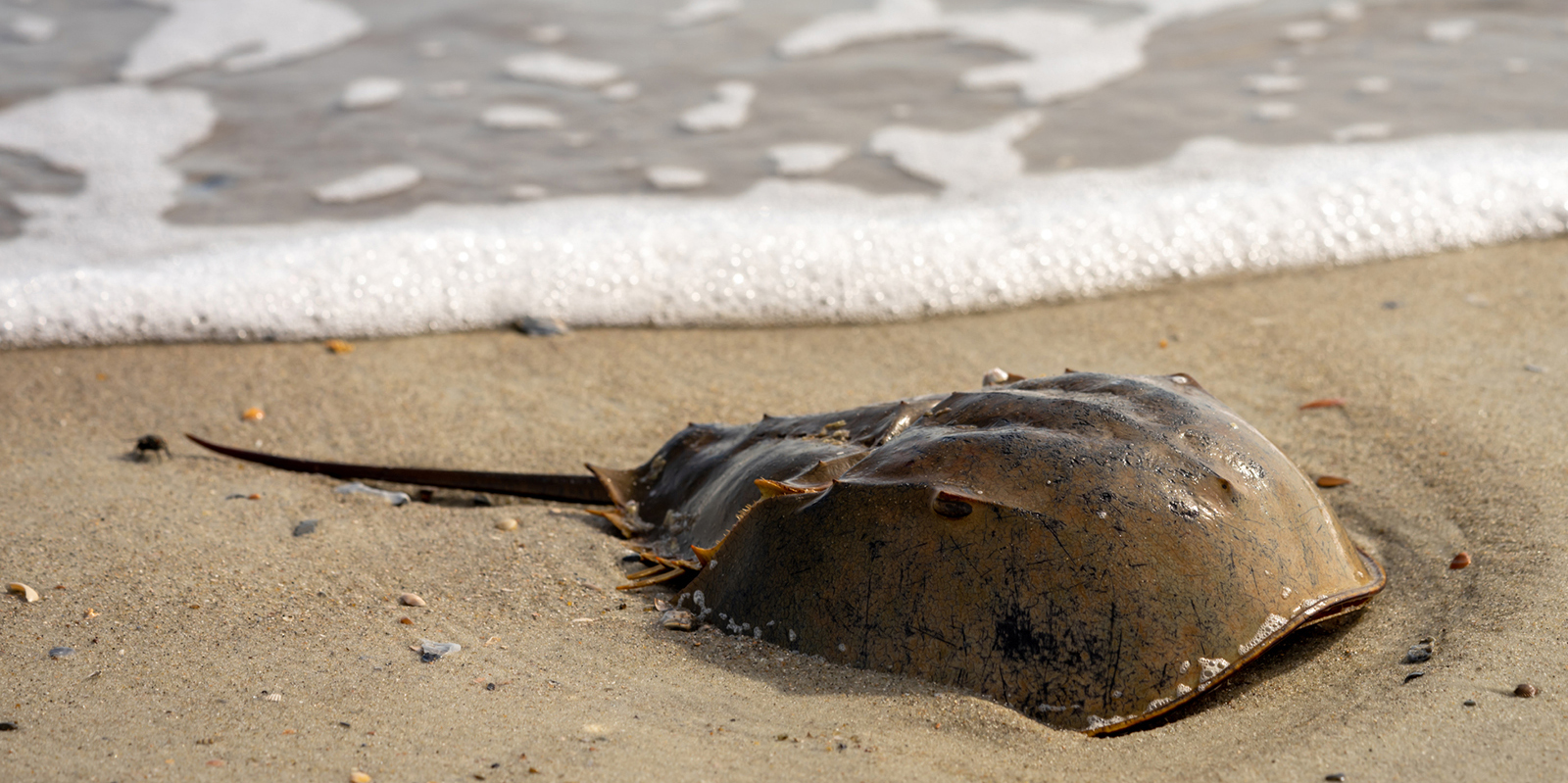Riding the Waves: Invasion of Exotic Marine Species
Climate change and plastics combine to create rising tide of invasives
January 18, 2018

A large buoy that washed ashore on the coast of Belgium in October — trailing a 10-foot rope that was covered in hundreds of goose barnacles, crabs, and shrimp — has been traced to an offshore lobster boat based in Point Judith, R.I.
The discovery of the buoy and attached marine life illustrates one of many ways that non-native marine life finds its way to distant shores. And one Massachusetts scientist believes it’s a vector for invasive species that will become more and more common as climate change produces increasingly severe storms that will toss sturdy plastic debris into the ocean.
Aaron Fabrice, 20, who describes himself as a beachcomber, citizen scientist, conservationist and nature guide, found the buoy Oct. 8 on a beach in the town of De Panne, on the northwest coast of Belgium. He said the discovery was “like a dream” as he and a friend counted 39 Columbus crabs, native to the Sargasso Sea near Bermuda, nestled between hundreds of goose barnacles. He claims it is “the largest observed stranding [of Columbus crabs] on the Belgian coast ever.”
Fabrice also found numerous skeleton shrimp on polyps on the barnacles, a species he said is commonly found attached to floating debris.
After collecting samples of the crabs for the Royal Belgian Institute for Natural Science, Fabrice posted photos of the buoy to beachcombing and lobstering message boards showing the unique combination of letters and numbers printed on it. Two months later, he learned that it belonged to Rhode Island lobsterman Roy Campanale Jr. of Narragansett, who acknowledged to Fabrice that he lost the buoy off his boat Mister Marco sometime in 2016.
“We did not expect that North American floating objects would wash up on our coast,” wrote Fabrice in an e-mail message. “Normally floating objects from North America wash up in Cornwall, U.K., or Brittany, France. There must have been an Atlantic seawater bubble coming through the channel in the North Sea.”
According to Jim Carlton, an ecologist at Williams College in Williamstown, Mass., who studies marine invasive species, debris from North America shows up on the coast of Europe fairly regularly, and it’s often colonized by a wide variety of marine life. He said that goose barnacles and Columbus crabs are oceanic species that can’t live in the coastal zone, so they are unlikely to become established in Belgium and affect native species.
But, he added, it could be that there were species from North America that were buried within the barnacle-crab community.
Carlton has studied the transoceanic dispersal of marine life in great detail. Last fall he published a paper in the journal Science about the nearly 300 species of Asian marine life he and his colleagues found on debris along the West Coast that they traced to the 2011 earthquake and tsunami in Japan.
He said natural disasters provide a greater opportunity for the dispersal of species across the Pacific than ever before, because of all the plastic objects that make up modern daily life. Before plastic became ubiquitous, most storm-tossed marine debris consisted of wood, vegetation and other biodegradable materials that would disintegrate before they made it across the oceans.
“That got us thinking that the story of ocean rafting has shifted rather remarkably in the last half century,” Carlton said. “The plastic rafts at sea now are very enduring. They’re not degrading and dissolving. Animals can go on a much longer voyage now than they could have historically when they were drifting on a piece of vegetation.”
The implication is quite dramatic. Carlton believes that the tsunami-caused invasion of species from across the Pacific is only a hint of what is to come. As increasingly severe storms — the result of a changing climate — hammer coastlines around the world, more and more marine species will find their way across the oceans on plastic debris, ultimately causing a homogenization of the world’s coastlines.
“Imagine the amount of debris that came off the Caribbean islands during the hurricanes last fall — many hundreds if not thousands of buildings and all of their contents were swept into the ocean,” he said. “The climate models and evidence strongly suggest that we’re going to be entering a world of more of these cyclonic systems, making ocean rafting potentially one of the major new vectors for invasive species.”
Rhode Island resident and author Todd McLeish runs a wildlife blog.
Categories
Join the Discussion
View CommentsYour support keeps our reporters on the environmental beat.
Reader support is at the core of our nonprofit news model. Together, we can keep the environment in the headlines.
We use cookies to improve your experience and deliver personalized content. View Cookie Settings



